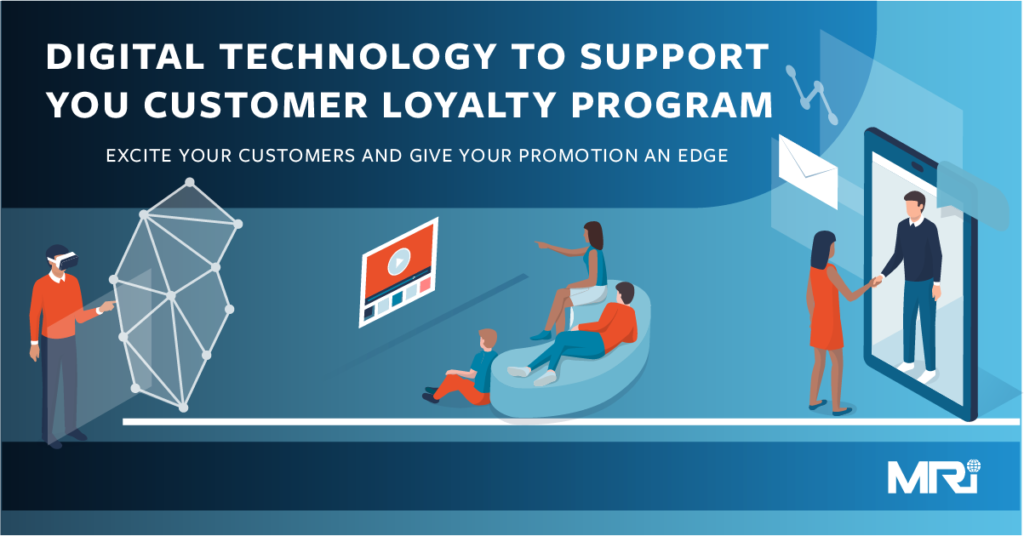With all the shiny new technology that exists today, there are so many opportunities to get your consumers excited about your loyalty program. Among the most popular are: augmented reality, geofencing, and voice activation. Bonus points: all of these technologies also help create a seamless experience!
Augmented Reality (AR)
In the last few years, Augmented reality (AR) has become increasingly popular and is expected to continue to grow tremendously. There is still a lot of confusion between AR and its relative “Virtual Reality” (VR). The difference boils down to this: Virtual Reality is when a user is immersed in a space that is completely virtual. Augmented reality is when virtual elements are added to a physical space (typically with phone cameras).
Using Augmented Reality to engage with a program improved the experience for 63% of loyalty program members. So, where does AR fit within your loyalty promotion? The most common application in a loyalty program is when AR is tied to a loyalty app and users scan brand labels for exclusive offers. However, there are many creative ways to use AR with your program. You can use AR to create a game, enhance your advertisements, incentivize specific products, and more.
Many brands (including Disney, IKEA, Patrón, and Converse) have already taken advantage of this technology. Sephora has a fun and unique AR application within its loyalty app. Customers can virtually “try on” different makeup products by using their mobile camera. Sephora utilizes AR tech from ModiFace- a leading AR provider that specializes in the beauty industry. Originally, consumers had to upload a still photo in order to use the Sephora Virtual Artist feature. Today, consumers can try on makeup products with live 3D facial recognition. With this feature, Sephora aims to increase mobile & online sales.
Sephora’s AR includes:
- virtual try-ons of over 8,000 products from different brands (digiday.com)
- As part of creating a seamless experience, users can build looks, save the steps, and buy the products all through the Virtual Artist (digiday.com)
Geofencing
For many brands, consumers are likely to spend more in-store than they would have online. With the popularity of online shopping (51% of Americans prefer to shop online, Big Commerce), brands must find creative ways to get consumers to shop in-store. Enter Geofencing. Geofencing is extremely valuable to a loyalty promotion. Brands can target consumers when they are near a retail location and send notifications, reminders, offers, and more. Automatic, location-based offers when inside a store improved the experience for 83% of loyalty program members who have tried this functionality. Additionally, Brands can use GeoConquesting to target consumers when they are near a competitor’s location.
Geofencing is becoming so popular with loyalty programs, that not using it has the potential to hurt your brand. “70% of Gen Z, 64% of Gen X and 63% of Millennials expect to receive personalized recommendations via an app while browsing in-store” (CrowdTwist).
Taco Bell is one of many brands that have used geofencing. By using their mobile app, Taco Bell was able to send push notifications to customers when they were near a taco bell location. The notification would remind consumers they can order food via the Taco Bell app to make the experience as quick and easy as possible.
- The geofencing campaign saw an increase of 6% in annual sales for the fast food chain.
Voice
There are currently about 3.25 billion voice assistants in use now, and that number is estimated to rise to about 8 billion by 2023 according to Juniper Research. Getting in on voice-activated loyalty early could yield major growth for your brand. With a lot of voice assistants, being one of the first is crucial. Smart speakers rely on top-rated and top-used answers since users want a concise response from their voice assistant. As you can imagine, once an answer has gained a lot of traction, it can be hard for others to compete (think Google’s SEO on steroids).
In late 2014, Amazon announced a groundbreaking new device- the Amazon Echo. People around the world were introduced to Alexa, their personal voice assistant. While the Echo wasn’t the first voice assistant, it was the first stand-alone smart speaker. Now, both Alexa and its competitor Google Home, are opening new possibilities for brands and marketers alike.
There are many ways adding voice activation to your loyalty program could excite and engage consumers. Users can check loyalty points, review purchase history with your brand, re-purchase items, claim rewards, and find answers about the loyalty program with their voice. There is even potential for users to join a loyalty program via voice assistant. This not only engages consumers, but simplifies the process as well.
Conclusion
By adding digital technologies to your customer loyalty program, you can strengthen your consumers’ engagement and loyalty to your brand. With these three tactics, we hope you feel more confident in your next customer loyalty program. For more ways to amp up your loyalty program, contact us.






